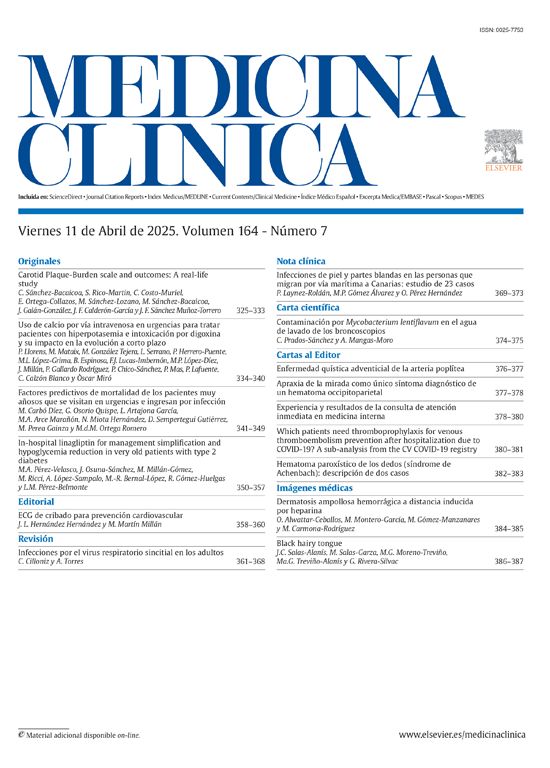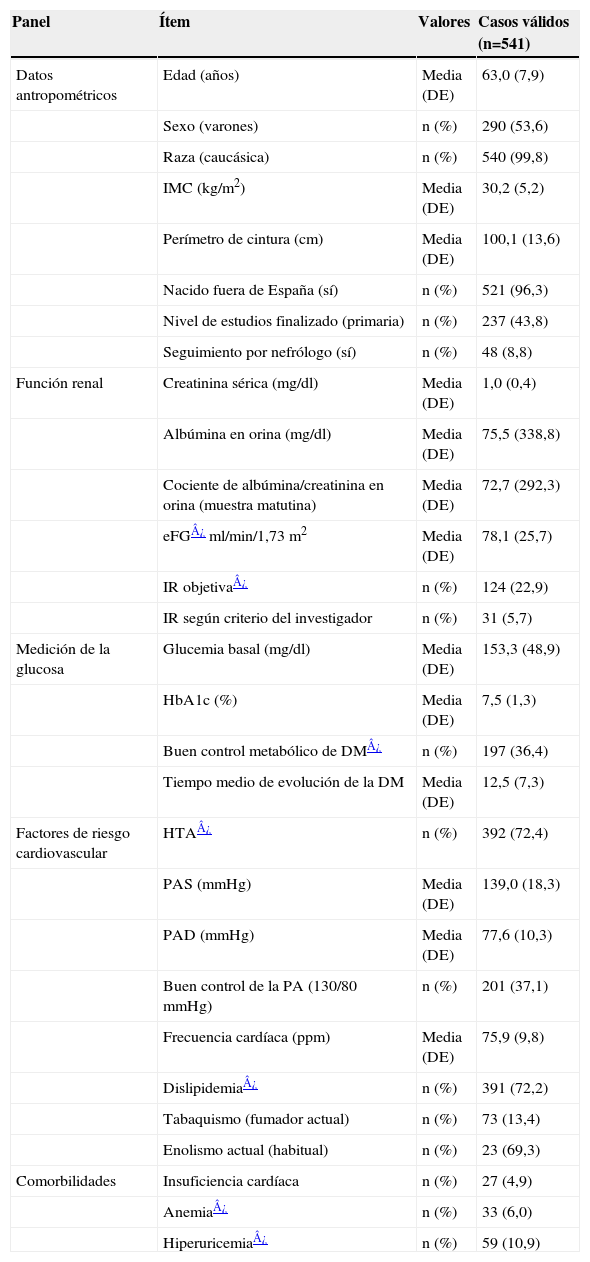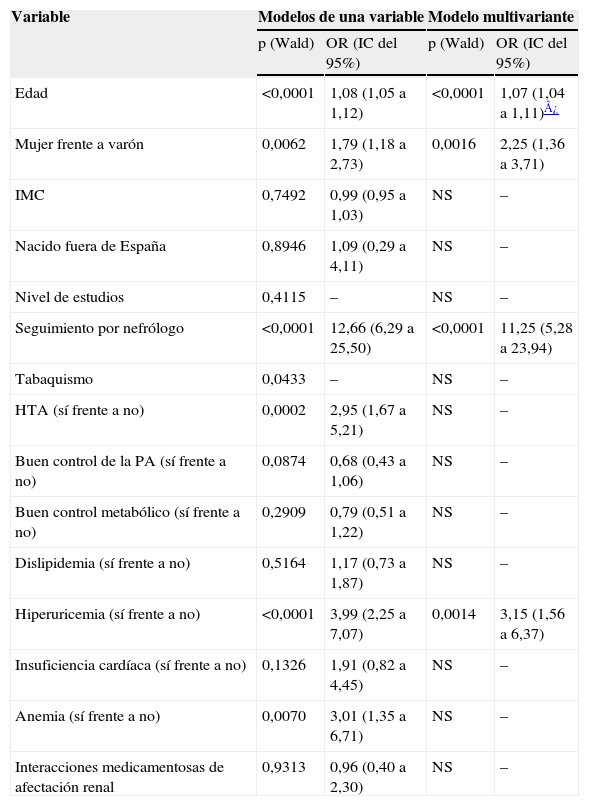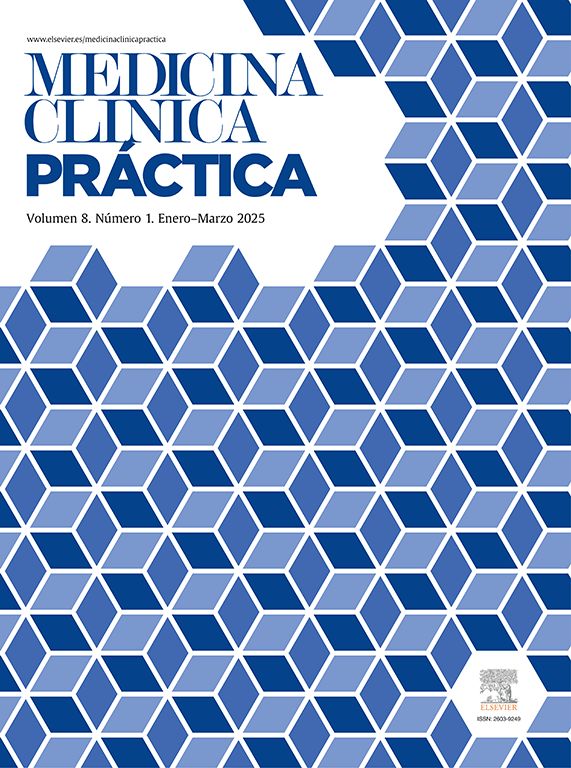El objetivo principal del estudio fue determinar la prevalencia actual de insuficiencia renal crónica (IRC) en pacientes ambulatorios con diabetes mellitus tipo 2 (DM2), en seguimiento en los servicios de Endocrinología a nivel nacional.
Pacientes y métodoEstudio con diseño observacional, transversal, multicéntrico y con recogida de datos retrospectiva. De cada participante se registraron datos demográficos y antropométricos, de función renal, de la diabetes, de factores de riesgo cardiovascular, comorbilidades y tratamientos. La presencia de IRC fue definida con un filtrado glomerular inferior a 60ml/min/1,73m2, y se utilizó el método Modification in Diet of Renal Disease abreviado.
ResultadosSe incluyeron 541 pacientes con DM2 de ambos sexos (el 53% eran varones), con una edad media (DE) de 63 años (7,9) y una hemoglobina glucosilada media del 7,6% (1,3). La prevalencia (intervalo de confianza [IC] del 95%) de IRC fue del 22,9% (IC del 95%: 19,4–26,7), superior a la estimada previamente, que fue del 5,7% (IC del 95%: 3,9–8,0) (p<0,0001). Como factores de riesgo de tener IRC se identificaron la edad (odds ratio [OR]: 2,07 [IC del 95%: 1,47–2,91] por cada 10 años de aumento), el sexo femenino (OR: 2,25 [IC del 95%: 1,36–3,71]) y la hiperuricemia (OR: 3,15 [IC del 95%: 1,56–6,37]). No hubo diferencias en el control metabólico entre los pacientes con IRC frente a sin IRC objetiva.
ConclusiónUn 22,9% de los pacientes con DM2 seguidos de manera ambulatoria por endocrinólogos presenta IRC y de esta población sólo está diagnosticada una cuarta parte. La determinación automatizada del aclaramiento de creatinina podría incrementar el porcentaje de diagnóstico y facilitar un mejor control metabólico en estos pacientes.
The aim of this study was to estimate the current prevalence of Chronic Renal Insufficiency (RI) in ambulatory patients with type 2 Diabetes (T2DM) assisted in Endocrinology Departments all over Spain.
Patients and methodsThis was an observational, cross sectional, multicenter study. From each participant the following data were retrospective collected: demographic, anthropometric, renal function, diabetes, cardiovascular risk factors, comorbidities and treatment. RI was defined by a glomerular filtration rate lower than 60ml/min/1.73m2, using the shortened MDRD method.
Results541 patients with T2DM were included, 53% were men, the mean age (DS) was 63 years old (7.9) and the HbA1c was 7.6 % (1.3). The prevalence (CI95%) of RI was 22.9% (19.4–26.7), higher than the previous estimate, witch was 5,7% (3.9–8.0, p<0,0001). The associated risk factor for RI were age (OR 2.07; 95%CI: 1.47–2.91 per each ten year period of increase), female gender (OR 2.25; 95%CI: 1.36–3.71) and hyperuricemia (OR 3.15; 95% CI: 1.56–6.37). There were no differences in the metabolic control between patients with RI vs those without RI.
Conclusions22.9% of T2DM ambulatory patients followed by endocrinologist had RI, but just a quarter of them had previously been diagnosed. The automated determination of creatinine clearance could increase the proportion of diagnosis and facilitate the improvement of the metabolic control in these patients.









